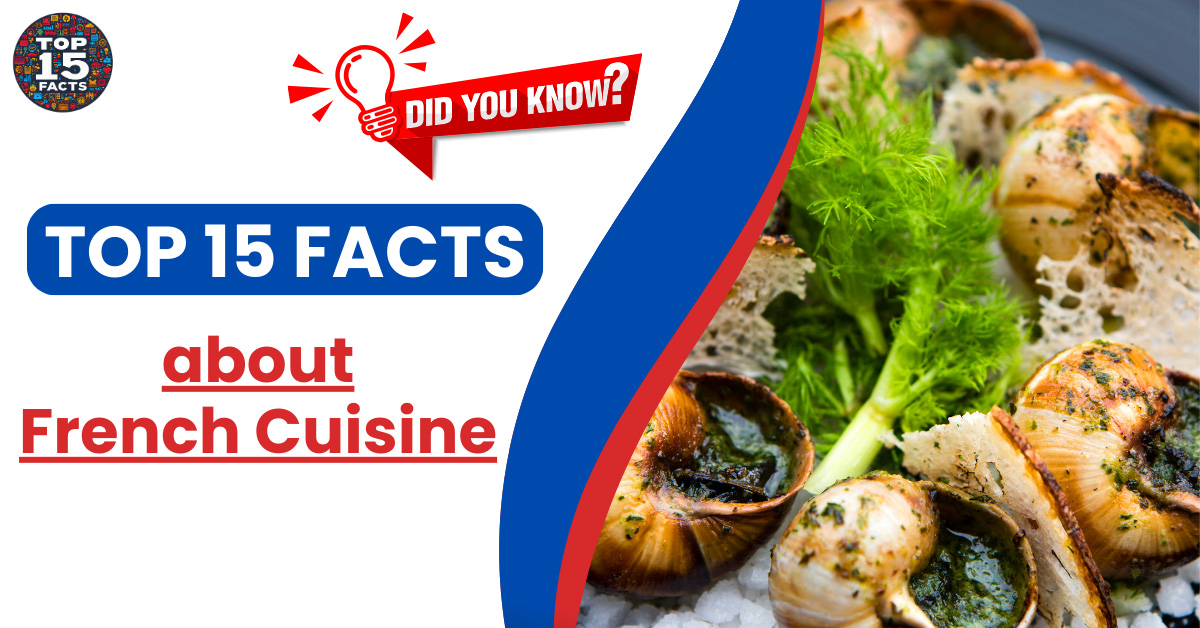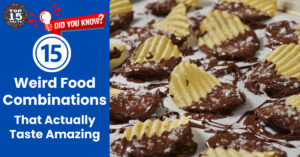Introduction
French cuisine enjoys worldwide renown for its sophistication, elegance, and iconic dishes. But delve a little deeper, and you’ll stumble across a treasure trove of surprising facts that will challenge your perceptions of this beloved culinary tradition. From unexpected ingredients to centuries-old practices, French cuisine consistently offers a delightful dance with the unexpected.
Top 15 Surprising Facts(One line)
- Snails are a celebrated delicacy.
- France boasts over 1,000 types of cheese.
- The French eat horse meat.
- Raw beef dishes are surprisingly common.
- Baguettes weren’t always the standard bread.
- French fries might not actually be French.
- Butter is a culinary cornerstone.
- The French have a unique take on breakfast.
- Meals are meant to be savored, not rushed.
- Regional specialties are a source of pride.
- Wine is deeply ingrained in French food culture.
- Offal (organ meats) finds its way onto many plates.
- The croissant may have Austrian origins.
- French cuisine has a complex history of regulations.
- “Nouvelle cuisine” revolutionized French cooking.
1. Snails are a celebrated delicacy.
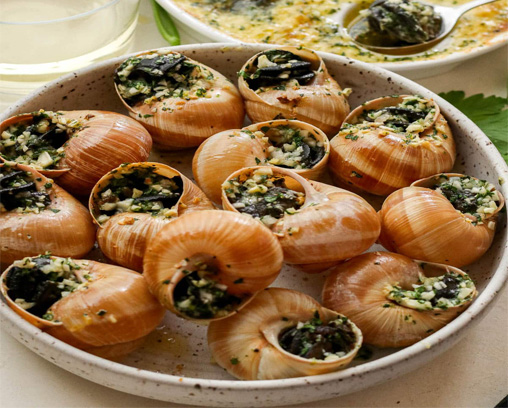
While the thought of eating snails might seem odd to some, escargot has a long and cherished history in French cuisine. Served piping hot with garlic, parsley, and lashings of butter, this dish is a true testament to French culinary adventurousness.
2. France boasts over 1,000 types of cheese.
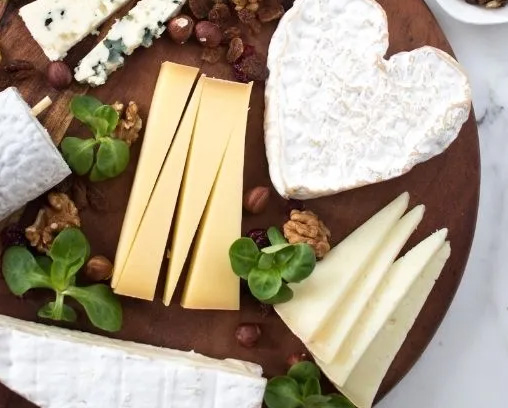
Fromage lovers, rejoice! France is a cheese paradise, with an estimated 1,000 (and some sources say over 1600) distinct varieties. From creamy Brie and pungent Roquefort to crumbly goat cheese, France celebrates the art of cheesemaking.
3. The French eat horse meat.
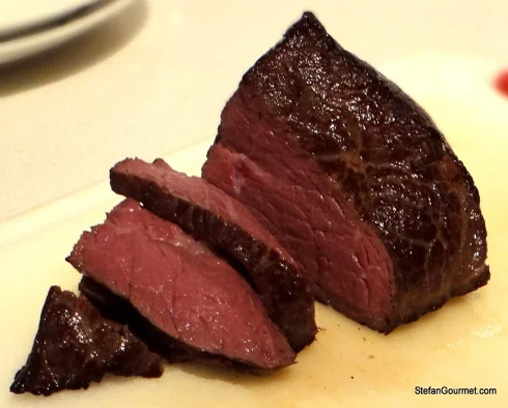
Though less common today, horse meat retains a place in French cuisine. Special butcher shops (“boucheries chevalines”) specialize in horse meat, which is often prepared as steaks or incorporated into sausages.
Read More: Banned Books: 15 Controversial Classics & Why | Explore the Censored
4. Raw beef dishes are surprisingly common.
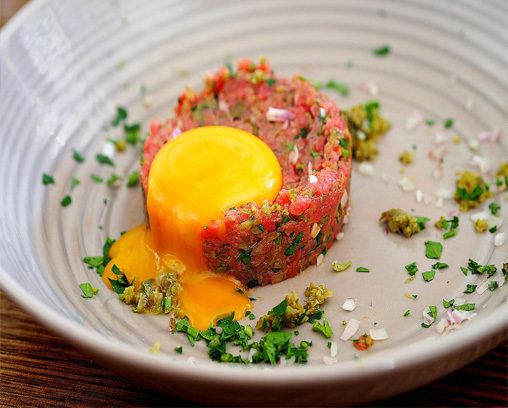
Steak tartare, a dish of finely chopped raw beef seasoned with capers, onions, and often a raw egg yolk, is a surprisingly popular French delicacy. Other raw beef preparations also grace various menus.
5. Baguettes weren’t always the standard bread.
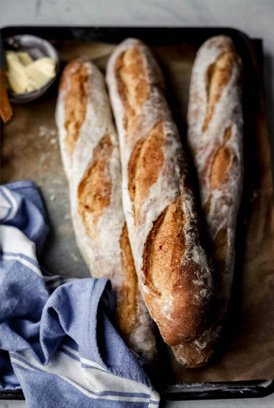
The iconic baguette is a relatively recent invention. Before the early 20th century, round, rustic loaves were the more common type of bread in France.
6. French fries might not actually be French.
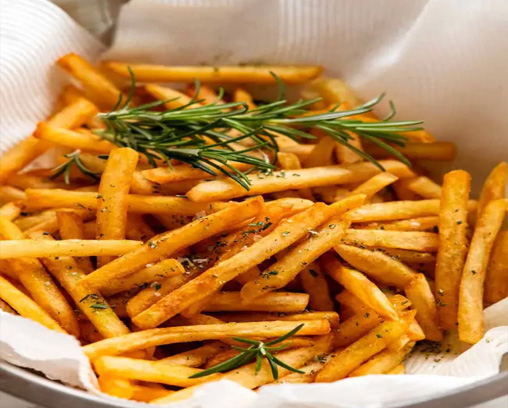
Despite their name, French fries’ origins remain somewhat murky. Thinly sliced and fried potatoes were enjoyed in various parts of Europe well before their association with France. It’s believed that American soldiers stationed in France during World War I picked up the habit of calling them “French fries” due to the prevalence of fried potatoes served there.
7. Butter is a culinary cornerstone.
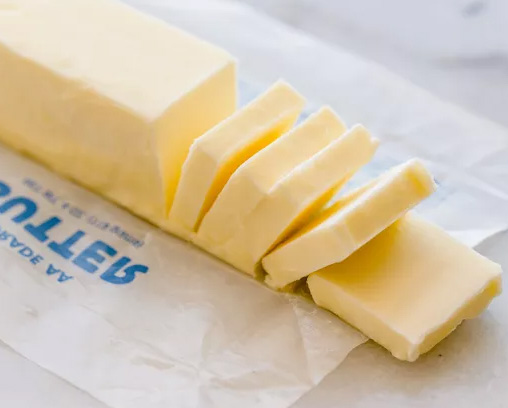
French cuisine has a deep love affair with butter. From flaky pastries to rich sauces and pan-frying, butter adds a luxurious depth of flavor to countless dishes. French butter itself is renowned for its quality and distinct flavor profile.
Read More: 15 Mind-Blowing Facts About Shakespeare You Didn’t Know
8. The French have a unique take on breakfast.

Unlike the hearty breakfasts common in other cultures, French breakfasts are typically lighter affairs. Coffee, a croissant or pain au chocolat (chocolate pastry), and perhaps some yogurt or fruit are standard fare.
9. Meals are meant to be savored, not rushed.
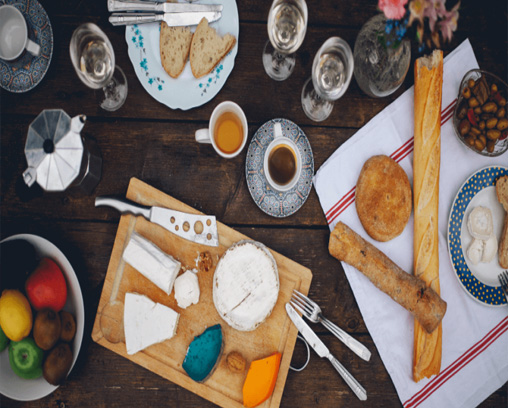
French meals are a social experience, meant to be enjoyed slowly and with conversation. A typical French meal might have several courses, savored over an extended period. This cultural emphasis on savoring food stands in contrast to the fast-paced approach to eating in some other countries.
10. Regional specialties are a source of pride.
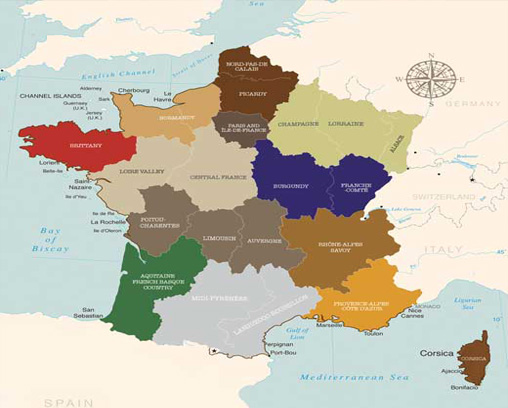
French cuisine is not monolithic. Each region boasts its own distinct specialties, reflecting local ingredients and traditions. From the rich cassoulet of southwest France to the delicate crêpes of Brittany, regional specialties are a point of immense pride.
Read More: 15 Surprising Renaissance Facts You Won’t Believe Are True
11. Wine is deeply ingrained in French food culture.

Wine is more than just a beverage in France; it’s an integral part of the culinary experience. Carefully chosen wines are meant to complement the flavors of each course, creating a harmonious dining experience.
12. Offal (organ meats) finds its way onto many plates.
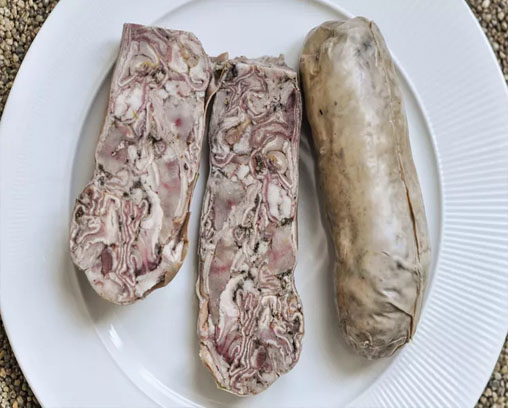
Image Source: foodandwine
While not for everyone, offal (organ meats like liver, tripe, and kidneys) holds a place in French cuisine. These ingredients are often prepared in unique and flavorful ways, such as the classic andouillette sausage made with tripe.
13. The croissant may have Austrian origins.
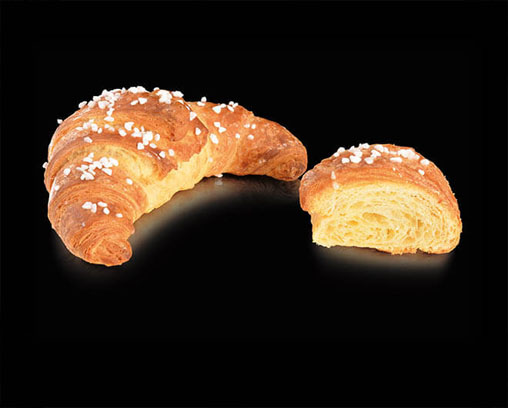
The beloved croissant may not be entirely French. A similar crescent-shaped pastry called the “kipferl” existed in Austria well before the croissant’s rise to fame in France. It is believed that Marie Antoinette, an Austrian-born queen of France, may have introduced the pastry to French bakers who then adapted it into the modern croissant.
Read More: Decoding the Da Vinci Code: 15 Facts vs. Fiction Unveiled
14. French cuisine has a complex history of regulations.
French cuisine has a surprisingly bureaucratic side. For centuries, sumptuary laws dictated which foods could be consumed by different social classes. Additionally, in the 20th century, famed chef Auguste Escoffier established a codified system of French haute cuisine, with specific techniques and presentations.
15. “Nouvelle cuisine” revolutionized French cooking.
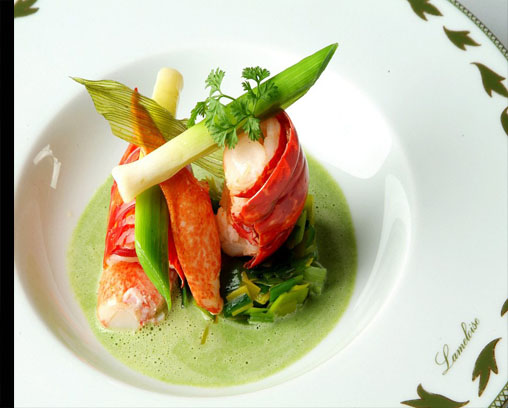
In the mid-20th century, a new wave of French cuisine emerged – nouvelle cuisine. This movement emphasized lighter dishes, fresher ingredients, and more artistic presentations, breaking away from the sometimes heavy and formal traditions of classical French cooking.
Conclusion
French cuisine is a captivating world waiting to be explored. Beyond the expected croissants and berets lies a rich tapestry of culinary adventures, where tradition and innovation intertwine. From the luxurious embrace of butter to the surprising delights of snails, French cuisine offers something to tantalize every palate. So next time you delve into a French dish, remember the fascinating history and surprising elements that contribute to its enduring legacy.
15 FAQs about French Cuisine Facts
-
Why is French cuisine so famous?
French cuisine’s reputation stems from several factors. The emphasis on fresh, high-quality ingredients, meticulous technique, and a focus on creating a well-rounded dining experience have all contributed to its international acclaim. Additionally, the historical codification of French haute cuisine under chefs like Escoffier further solidified its influence on global culinary trends.
-
Is French food hard to make?
French cuisine can range from complex to surprisingly simple. While some dishes require advanced techniques and specialized equipment, many French recipes rely on straightforward methods and readily available ingredients. Even home cooks can explore the wonders of French cuisine by starting with basic recipes and gradually expanding their repertoire.
-
What is the most iconic French dish?
While opinions may vary, contenders for the most iconic French dish often include Boeuf Bourguignon (a hearty beef stew), Coq au Vin (chicken braised in red wine), or crêpes (thin pancakes with sweet or savory fillings).
-
What is a typical French lunch?
A typical French lunch might involve a simple salad, a sandwich (like a jambon-beurre – ham and butter baguette), or a composed dish, such as quiche or steak frites (steak and fries).
-
What are some popular French desserts?
France delights dessert lovers with classics like crème brûlée (custard with a caramelized sugar crust), éclairs (choux pastry filled with cream and topped with chocolate), macarons (delicate meringue cookies), and the decadent chocolate mousse.
-
Is it rude to ask for a doggy bag in France?
Traditionally, asking for a doggy bag wasn’t common. However, attitudes are shifting, and it’s becoming more acceptable, particularly in response to reducing food waste. If unsure, discreetly asking your waiter is the best approach.
-
Can you get tap water in French restaurants?
Yes, you can request tap water (“une carafe d’eau, s’il vous plaît”). It’s free and perfectly safe to drink.
-
Is vegetarianism common in France?
Vegetarianism was once less common but is rapidly gaining popularity. Many restaurants now offer vegetarian and even vegan options.
-
What are some good resources for learning French cooking?
Classic cookbooks like Julia Child’s “Mastering the Art of French Cooking” or Jacques Pepin’s works are excellent starting points. Numerous online resources, cooking classes, and French food blogs offer recipes and instruction.
-
Is French cuisine expensive?
France offers dining options for all budgets. While haute cuisine restaurants can be costly, local bakeries, bistros, and even grocery stores offer delicious and affordable French cuisine.
-
What are some important French culinary terms to know?
Mastering a few key terms will enhance your French dining experience: “Apéritif” (pre-dinner drink), “entrée” (starter/appetizer, not the main course), “plat principal” (main course), and “fromage” (cheese).
-
Should I tip in France?
Service charges are generally included in restaurant bills. However, leaving a small additional tip (around 5-10%) is appreciated for exceptional service.
-
Do they eat frog legs in France?
Yes, frog legs (“cuisses de grenouille”) are a traditional French dish, though less common today. They’re often prepared with garlic, parsley, and butter.
-
What etiquette should I follow in French restaurants?
While less formal than in the past, courtesy is still valued. Greet your waiter with “bonjour/bonsoir” (hello, good evening). Keep your hands visible on the table (not your lap), and avoid using your phone excessively during the meal.
-
Are there any unusual French food combinations that might surprise foreigners?
Yes! French cuisine sometimes includes unexpected flavor pairings that might raise eyebrows elsewhere. Examples include melon and cured ham as a starter, steak served with Roquefort cheese sauce, or sweet crêpes filled with savory ingredients like mushrooms and cheese.

